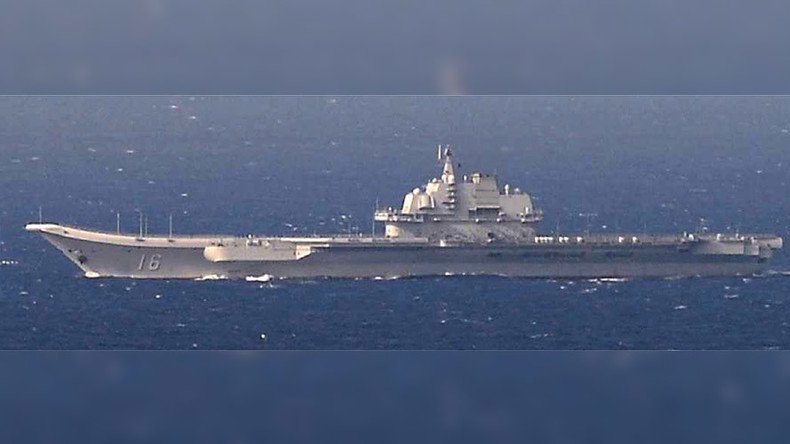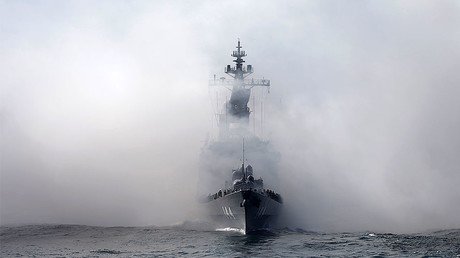Chinese aircraft carrier, 5 warships pass Taiwan on way to S. China Sea drills

A Chinese aircraft carrier along with five other vessels has passed through waters south of Taiwan on its way to what are reportedly the carrier’s first blue water drills in the Pacific. Japan says it is closely monitoring the exercises.
The ‘Liaoning’ carrier passed some 90 nautical miles south of Taiwan’s southernmost point through the Bashi Channel, between Taiwan and the Philippines.
The Liaoning, with its accompanying fleet, will carry out drills in the Western Pacific “in accordance with annual exercise plans,” the Chinese navy said in a statement on Saturday.
Tokyo will closely monitor the drill, Chief Cabinet Secretary Yoshihide Suga said at a news conference on Monday, as reported by Reuters. The drill is largely seen as an indication of China’s growing military potential.
The ‘Liaoning’ spent the previous days in the Yellow Sea, with J-15 fighter jets practicing takeoff and landing, air refueling and combat drills. Earlier this month photos and videos from the Bohai Sea were made public by the Chinese military.
Tensions have been running high recently in the Asia-Pacific region, with countries stepping up their military capabilities and a number of unplanned encounters both at sea and in the air.
Several days ago Japan approved a record $43.6 billion military budget, increasing spending for the fifth year in a row in a step triggered by perceived potential threats from China and North Korea.
Prime Minister Shinzo Abe’s cabinet is to spend the money on mobile missile batteries, amphibious vehicles, and other equipment better suited to a mobile force, Reuters reported.
Earlier in December, China expressed “grave concern” when two Japanese F-15 fighter jets “interfered” with Chinese Air Force training in the Western Pacific. The jets were scrambled to follow Chinese warplanes that were flying over the Miyako Strait as part of a routine exercise, the Chinese Defense Ministry said.
In November, the Washington-based Asia Maritime Transparency Initiative (AMTI) said in a report that in the meantime Vietnam is building large hangars on a disputed Spratly island in South China Sea and is lengthening the runway up to 1,000 meters there.
At the end of October, China held surprise drills near the disputed islands in response to a US ‘freedom of navigation’ patrol, in which an American guided-missile destroyer went through waters over which Beijing claims sovereignty.
China’s recent exercises are taking place amid rising tensions with the US.
In December, US President-elect Donald Trump added fuel to the flames by calling into question Washington’s decades-long ‘One China’ approach, which stipulates that the country can hold diplomatic relations either with mainland China or Taiwan, but not both.
“I don’t know why we have to be bound by a ‘One China’ policy, unless we make a deal with China having to do with other things, including trade,” Trump said. In response, China’s ambassador to the United States warned that Beijing would not accept any changes to the agreement.
Cui Tiankai said that China would never allow issues involving its national sovereignty or territorial integrity to be a “bargaining chip” in US-China relations.













